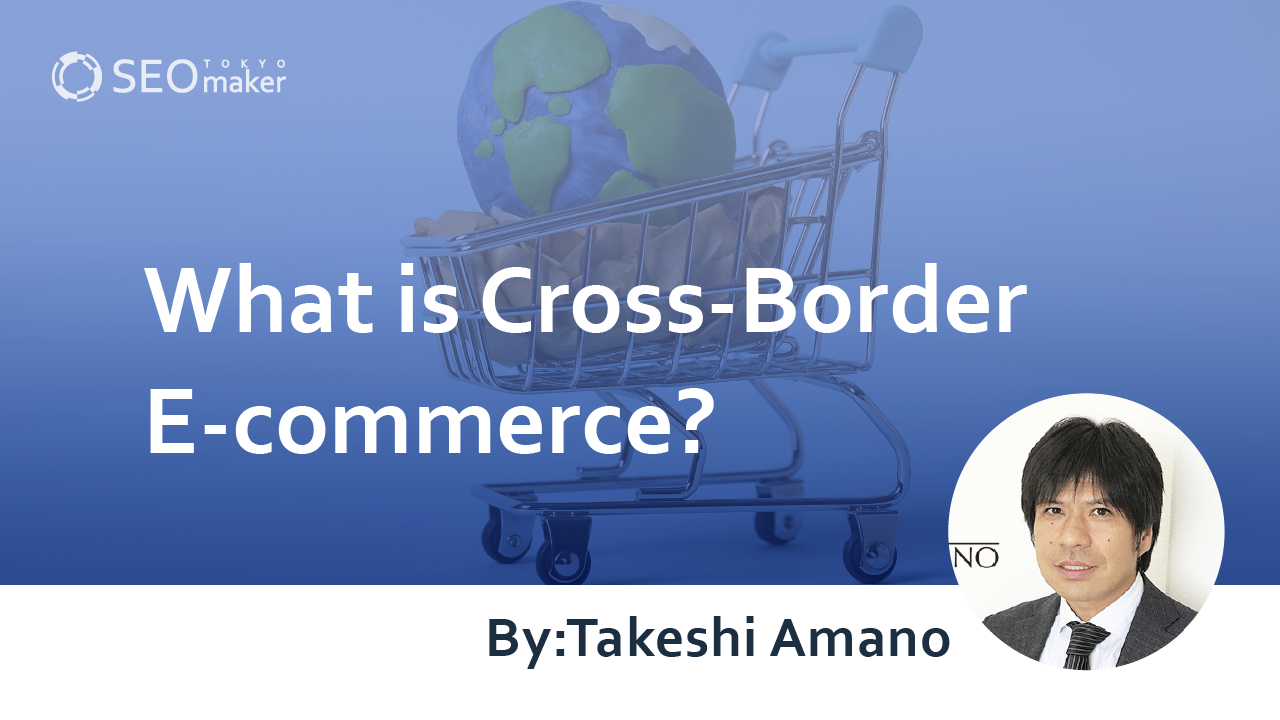What is Cross-Border E-commerce? : Explaining Market Size, Benefits, Drawbacks, and How to Start
contents
- 1 What is Cross-Border E-commerce?
- 2 Benefits of Cross-Border E-commerce
- 2.1 Rapid Scalability of Existing E-commerce Products
- 2.2 Significantly Broader Customer Base
- 2.3 Reduction in Financial Risks
- 2.4 Gaining Expertise in International Web Marketing
- 2.5 Differentiation from Domestic Competitors
- 2.6 Drawbacks of Cross-Border E-commerce
- 2.7 Higher Costs and Risks Associated with Product Shipping
- 2.8 Need for Support and Follow-up for Foreign Customers
- 2.9 Necessity to Comply with Foreign Tax Systems and Laws
- 2.10 Increased Back-Office Costs for Cross-Border E-commerce
- 3 How to Start Cross-Border E-commerce
- 4 Selling Through Cross-Border E-commerce Capable Shopping Malls
- 5 Frequently Asked Questions about Cross-Border E-commerce
- 5.1 Q: What are cross-border e-commerce businesses and services?
- 5.2 Q: What is the difference between traditional trade and cross-border e-commerce?
- 5.3 Q: What is the purpose of cross-border e-commerce?
- 5.4 Q: What are the advantages of cross-border e-commerce?
- 5.5 Q: What types of cross-border e-commerce are there?
- 5.6 Q: What should you watch out for in cross-border e-commerce?
- 6 Summary

According to the Ministry of Economy, Trade and Industry’s “FY2021 E-commerce Market Survey,” the global cross-border e-commerce market was estimated at 785 billion US dollars in 2021 and is projected to reach 7.938 trillion US dollars by 2030.
The annual growth rate of cross-border e-commerce from 2021 to 2030 is expected to expand to 26.2%. Moreover, there are numerous cases where businesses can expect sales by deploying the same strategies used domestically to international markets. As mentioned in the article ” Why ‘Japan-only’ E-commerce Sites Are Growing Sales Overseas ,” if you are conducting e-commerce domestically, constantly focusing on cross-border e-commerce could significantly expand your business.
This time, we will clearly explain the basics of cross-border e-commerce for those involved in e-commerce, including knowledge on how to successfully deploy your e-commerce products internationally.
What is Cross-Border E-commerce?
Cross-border e-commerce refers to the expansion of a company’s e-commerce activities beyond domestic borders to international markets. With the advent of platforms that facilitate cross-border e-commerce, it has become easier for domestic products to be marketed internationally, making it a notable aspect of e-commerce business.
The already high potential for Japanese companies in cross-border e-commerce was supported by the international trust in the quality of Japanese products, seen in inbound tourists massively purchasing domestic goods. The shift in consumer behavior from in-store purchasing to online sales during the pandemic has further promoted the adoption of cross-border e-commerce as a viable option for acquiring overseas products.
Reference: How to Succeed in American Cross-Border E-commerce? Explaining Market Size and Tips for Entering the US Market
Market Size of Cross-Border E-commerce
There are various data sources regarding the market size of cross-border e-commerce, but many figures are derived from different primary data. The following three data points from the Ministry of Economy, Trade and Industry’s “FY2024 E-commerce Market Survey ” are particularly insightful.
-Global cross-border e-commerce market size
-China’s cross-border e-commerce market size
-USA’s cross-border e-commerce market size
We will explain below.
Global Cross-Border E-commerce Market Size
According to the estimates calculated by the Ministry of Economy, Trade and Industry, the global cross-border e-commerce market size was 785 billion US dollars in 2021.
China’s Cross-Border E-commerce Market Size
The amount spent by Chinese consumers on Japanese products via cross-border e-commerce was 2.2569 trillion yen in 2022 and 2.1382 trillion yen in 2021.
Chinese e-commerce is characterized by significant short-term sales driven by seasons and events. For example, during the 2020 Singles’ Day campaign, known as the day for singles, the total transaction volume recorded in just one day by Alibaba Group and JD.com, two of China’s major e-commerce platforms, reached 12 trillion yen.
Reference: China’s “Singles’ Day” Online Sales Hit 12 Trillion Yen, Benefiting Japanese Companies
USA’s Cross-Border E-commerce Market Size
The amount spent by Americans on Japanese products via cross-border e-commerce was 356.1 billion yen in 2022 and 336.2 billion yen in 2021.
Furthermore, a report by EDCM, which specializes in e-commerce market research, indicates that Amazon.com is ranked first in global marketplace transactions. Considering that the second and third spots are occupied by China’s Alibaba Group-operated Taobao and Tmall Global respectively, it’s clear that Amazon.com alone significantly reflects the size of the American e-commerce market.
Reference: Top eCommerce marketplaces worldwide
Benefits of Cross-Border E-commerce
Expanding your business into cross-border e-commerce, beyond domestic online commerce, offers primarily five advantages.
-Rapid scalability of existing e-commerce products
-Significantly broader customer base
-Differentiation from domestic competitors
-Reduction in financial risks
-Acquisition of international web marketing expertise
We will explain each point.
Rapid Scalability of Existing E-commerce Products
By selling existing products internationally through cross-border e-commerce, you can expand your market without needing new product development. If your products meet an existing demand overseas, simply introducing payment services friendly to the target country’s users on your Japanese e-commerce site can increase sales.
Using subscription-based or fee-charging international payment platforms can also reduce the time and cost associated with localization for each country. There might be substantial sales you are missing out on because your existing e-commerce products have not yet been accessible to international customers. By entering cross-border e-commerce, these products can generate significant sales with minimal effort in a short time.
Significantly Broader Customer Base
According to the UNFPA (United Nations Population Fund), in 2023, Japan’s population was the 12th largest in the world at 123.3 million, a decrease of 2.3 million from 2022. A declining domestic population means a shrinking customer base for domestic e-commerce.
In contrast, the country with the largest population is India, estimated at 1.4286 billion, followed by China at 1.4257 billion, and the USA at 340 million. If you can reach countries with large populations through cross-border e-commerce, your potential customer base can increase substantially. If the needs and solutions your products offer are globally relevant, engaging in cross-border e-commerce can yield significant returns.
Reference: World Population Prospects 2023
Reduction in Financial Risks
Generating revenue in foreign currencies and retaining profits in those currencies allows you to hold global cash in currencies other than the Japanese yen. This enables flexibility during periods of yen depreciation or appreciation, helping to mitigate financial risks effectively.
Gaining Expertise in International Web Marketing
By deploying products internationally through cross-border e-commerce, you will become well-versed in the unique circumstances, laws, and platforms of the target countries. This not only lowers the barrier to international product expansion but also provides valuable experience for launching non-e-commerce businesses abroad in the future. A significant benefit of cross-border e-commerce is the ability to start a business targeting foreign markets without the need to establish a physical presence abroad, all from within your home country.
Reference: Top 5 Examples of Content Marketing Abroad! Explaining Key Points for Success
Differentiation from Domestic Competitors
Engaging in cross-border e-commerce allows you to compete in markets that are not influenced by domestic competition. Profits generated from cross-border e-commerce can be reinvested in domestic e-commerce operations, strengthening your competitive edge at home and helping to stabilize your overall e-commerce business.
Drawbacks of Cross-Border E-commerce
While cross-border e-commerce offers the significant advantage of easily expanding products internationally from within your home country, it also has four main drawbacks compared to domestic e-commerce.
-Higher costs and risks associated with product shipping
-Need for support and follow-up for foreign customers
-Necessity to comply with foreign tax systems and laws
-Increased back-office costs for managing cross-border e-commerce
I will explain below.
Higher Costs and Risks Associated with Product Shipping
Shipping overseas inevitably incurs higher costs than domestic deliveries. With longer transportation routes and distances, there are increased risks of loss, and dealing with claims and returns can also result in higher costs for reshipment.
Need for Support and Follow-up for Foreign Customers
Compared to domestic consumer support and aftercare, the challenges of cross-border e-commerce are significantly amplified due to language barriers and cultural differences. Overcoming these challenges requires the acquisition of skilled personnel or finding outsourcing partners capable of providing adequate customer support.
Reference: Is Running an E-commerce Site Difficult? Introducing Solutions and Success Tips for E-commerce Operations
Necessity to Comply with Foreign Tax Systems and Laws
For all aspects of cross-border e-commerce, including product details and sales methods, it is necessary to comply with the tax systems and laws of each country. Since laws can vary by state or region within a country, it is crucial to clarify legal issues and devise strategies accordingly.
Increased Back-Office Costs for Cross-Border E-commerce
Back-office functions such as human resources, accounting, legal, and general administration for cross-border e-commerce may expand, potentially reducing the profit margins compared to domestic e-commerce. It is essential to be aware that problems and tasks not encountered in domestic e-commerce could become costly and diminish the profitability of cross-border e-commerce.
How to Start Cross-Border E-commerce
There are primarily five methods to start cross-border e-commerce.
-Sell through cross-border e-commerce capable shopping malls.
-Utilize platforms dedicated to managing cross-border e-commerce.
-Make existing e-commerce sites multilingual.
-Adapt existing e-commerce sites’ payment systems to handle foreign transactions.
-Launch a new e-commerce operation targeted at foreign markets.
I will explain below.
Selling Through Cross-Border E-commerce Capable Shopping Malls
One way to start cross-border e-commerce is by selling your products in international shopping malls. Well-known malls for cross-border e-commerce include Alibaba Group’s Taobao, Tmall Global, JD.com, and Pinduoduo.
In the United States, Amazon, eBay, and Walmart are known for being high-revenue malls.
This approach eliminates the need for system development and operational efforts, but the presence of numerous competitors means you must excel in in-mall marketing.
Reference: Country-by-Country Introduction to Top Overseas E-commerce Sites! Recommended Countries for Market Entry?
Utilizing Platforms for Cross-Border E-commerce
A method for launching a cross-border e-commerce operation involves using platforms specialized in this area to set up an e-commerce site with a unique domain. Shopify is one of the most famous platforms for this purpose. Shopify itself provides clear guidance on cross-border e-commerce.
The platform is attractive for its user-friendly management interface, including support in multiple languages, and it continuously adds advanced global features. It also supports payments in cryptocurrencies.
By utilizing a cross-border e-commerce platform, businesses can launch and expand more cost-effectively and swiftly than building an e-commerce site from scratch.
Reference: How to Start Cross-Border E-commerce with Shopify! Introducing Useful Apps
Multilingualizing Existing E-commerce Sites
By updating and multilingualizing existing e-commerce sites, it becomes possible to start cross-border e-commerce. However, it’s necessary to adapt the site to handle shipping costs and to comply with the laws and tax systems of the target countries.
As the information required varies by country, expanding cross-border e-commerce into multiple countries involves more than simply translating a Japanese site into other languages; it requires tailored information for each country.
If the existing e-commerce site is aimed at domestic customers, using servers in Japan means that specific SEO strategies for multilingual sites are needed to attract traffic from abroad. Techniques such as targeted pay-per-click advertising can also be used to drive sales for multilingual sites.
Multilingual website strategies also fall under SXO (Search Experience Optimization), providing an opportunity to unlock the hidden potential of existing e-commerce sites.
Reference: What is SXO? Detailed Explanation of Strategies and Points of Attention, Differentiating from SEO
Adapting Only the Payment System of Existing E-commerce Sites for International Use
The Senior Director and Deputy Representative of PayPal’s Tokyo office pointed out in an interview with Toyo Keizai that sales from abroad can surge even with a site that remains in Japanese.
This means that by integrating commonly used payment platforms abroad into an existing site and simply adding their buttons, you can start cross-border e-commerce. Writing shipping information intended for Japanese overseas in Japanese allows an all-Japanese site to function and launch as a cross-border e-commerce site.
Reference: What is Online Payment? Explaining the Advantages, Disadvantages, and Characteristics of Different Payment Methods
Launching a New E-commerce Site for Foreign Markets
Starting cross-border e-commerce by launching a new e-commerce site tailored for foreign markets allows you to align usability, design, and content structure with the target users of that country. This makes it possible to operate independently as a site dedicated to that country, simplifying operations.
Moreover, there are significant advantages in terms of SEO. The physical location of servers directly impacts SEO effectiveness. Therefore, renting servers in the target country can provide better SEO outcomes than operating a cross-border e-commerce site from servers in Japan aimed at that country.
Reference: What is International SEO? Explaining Steps to Increase Traffic and Techniques
Frequently Asked Questions about Cross-Border E-commerce
Q: What are cross-border e-commerce businesses and services?
A: Cross-border e-commerce refers to using online retail capabilities to allow people from one country to purchase goods from another. It encompasses the mechanisms, business models, and user experiences involved.
Q: What is the difference between traditional trade and cross-border e-commerce?
A: The main difference is that traditional trade involves transactions between businesses and the wholesale of goods internationally, whereas cross-border e-commerce involves selling directly to overseas buyers.
Q: What is the purpose of cross-border e-commerce?
A: The objective of cross-border e-commerce is to expand into new markets and grow e-commerce operations. It not only aims to boost sales of products already successful domestically but also to scale products that have niche demands within the country, thereby significantly increasing profits.
Q: What are the advantages of cross-border e-commerce?
A: Compared to traditional trade and operating physical stores abroad, starting an overseas business via cross-border e-commerce presents a significantly lower barrier to entry. In an era where global platforms continue to adapt to cross-border transactions, e-commerce malls, and payment systems, cross-border e-commerce offers an easy startup advantage for creating business overseas.
Q: What types of cross-border e-commerce are there?
A: There are several forms of cross-border e-commerce. One can sell through international shopping malls such as China’s Alibaba-operated Tmall Global, JD.com, and Pinduoduo, or in the US through Amazon, eBay, and Walmart.
Alternatively, businesses can launch their own cross-border e-commerce sites by using platforms that facilitate cross-border operations, multilingualizing existing sites, or starting new e-commerce operations aimed at foreign markets.
Q: What should you watch out for in cross-border e-commerce?
A: It involves different types of costs and risks compared to domestic e-commerce. Shipping products internationally increase shipping costs and the risk of loss. Support for foreign customers, handling complaints, and adapting to foreign tax systems and laws require careful attention. Compared to domestic e-commerce, the back-office costs may increase, and careful management of profit margins against sales is necessary.
Summary
Cross-border e-commerce involves internet communications, shipping, payments, malls, and platforms all adapted for global interaction, witnessing remarkable market growth. When expanding overseas, it’s crucial to analyze the needs, legal and tax systems, and cultural aspects to strategize effectively, considering the balance between sales and costs. Engaging with platforms that provide support for cross-border e-commerce and attending webinars from companies experienced in the field can enhance practical literacy by learning from both success and failure cases.
Top of Form










![What is a Description? Explaining the Meaning, Writing Style, and Changing Word Count – [2023 Edition]](https://www.switchitmaker2.com/en/wp-content/uploads/2024/09/what-is-description.webp)










